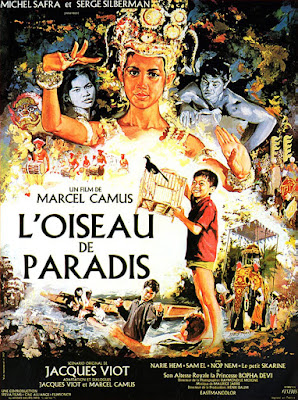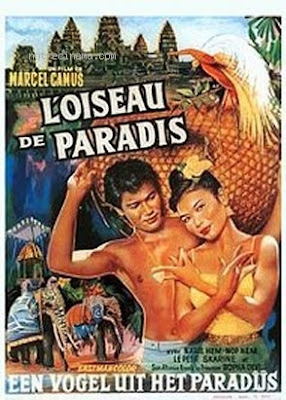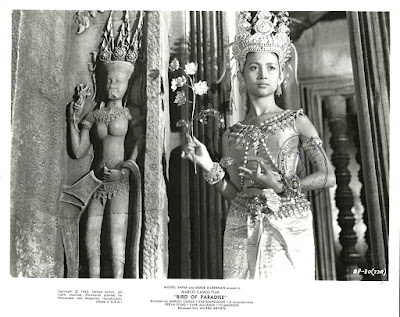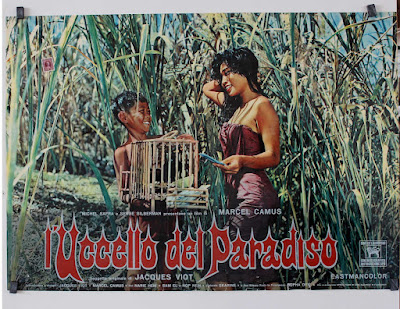L'oiseau de Paradis

Director: Marcel Camus
Year:
1962
Rating:
8.0
Country: France
Aka - Dragon Sky
This is simply a gorgeous film. A feast for the eyes and senses. Every inch
of the screen is awash with vivid color. A spiritual journey into culture,
myth, Buddhism, death and reincarnation. The screen is constantly filled
with moments of wonder and beauty whether it is the dragon boat races, Buddhist
monks chanting, festivals, children playing, a kickboxing match, rickshaws
on the quite streets, a theatrical reenactment of the legend of Rama, Sita,
Ravana and Hanuman and finally a visit to the grandeur of Angkor Wat where
the carved stone faces have looked down on man's misery for hundreds of years.
It is directed by Marcel Camus and located in Cambodia. All the characters
are Cambodian but speak French. Cambodia had been a French colony. Shot in
1962 only a few years before the horror of Vietnam and then Pol Pot. Camus
had directed in exotic (for those days) locales before - Black Orpheus and
The Pioneers in Brazil and Fugitive in Saigon in South East Asia.
This shares similarities with Black Orpheus as the story reflects a local
myth - that of Rama and Sita that is being performed on stage. Two people
who are far apart on the social ladder realize they were lovers in a past
life and that fate has brought them together where nothing matters except
their love for one another that has lasted through time. A young boy plays
the Hanuman of the story and an upper class disdainful Cambodian fills out
the Ravana role. It is slow and lovely as it just indulges and bathes luxuriously
in the details and spectacle of the country but eventually a love story emerges.
The beautiful Dara (Nari Hem) is an upper class young woman and classical
Cambodian dancer. She is being romantically pursued by Khem (Nope Nem) who
is a complete scoundrel and treats the poor like dirt. Sok (Sam El) is a
poor orphan who lives on his wits, his cheerful charm and friends. The three
of them collide in inevitable tragedy fated long ago.
The story is poetic though fairly predictable. It is the setting, cinematography
and music from Maurice Jarre that makes the film so compelling, nearly hypnotic.
Perhaps I was so drawn to this film because I visited Angkor Wat back in
1991 and found it a wonderland of beauty, spirituality and ancient temples-
still untouched for the most part by tourists - not so anymore I am afraid
- they were still digging up land mines - and being charmed by the people
- especially the small children who spoke perfect English and wanted to be
your guide for $1 a day. I have a very soft spot for the country and seeing
it like this in 1962 was just a gift.
Of interest to some perhaps is that the female who takes the lead in the
performance of Rama and Sita in the last segment is Bopha Devi (also spelled
Buppha - her name meaning Flower Goddess). The camera goes in for a close-up
of her and you may wonder why since she has not been in the film. She also
gets top billing. There is a reason for that. She is a Princess, daughter
of King Norodom Sihanouk. She had an interesting life. She was the director
and premier dancer of the Royal Ballet of Cambodia. Now mind you Cambodia
ballet is not what we think of as ballet but a very stylized form using hands
and small movements. When Pol Pot rose to power she went into exile but later
went back and revived the Cambodian dance form of Aspara that goes
back over a thousand years. She passed away in 2019.





